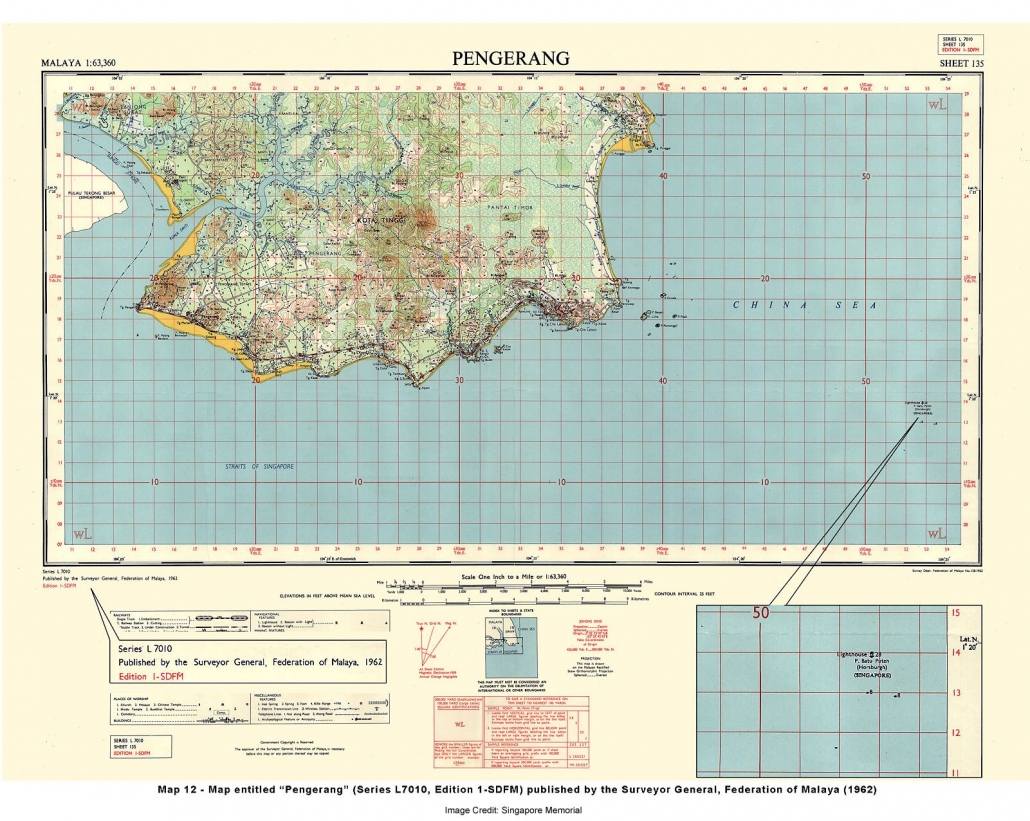What is the Pedra Branca dispute?
Topic of Study [For H2 History Students]:
Paper 2: Regional Conflicts and Co-operation
Source Based Case Study
Theme III Chapter 1: Inter-state tensions and co-operation: Causes of inter-state tensions: territorial disputes
Historical Background
Pedra Branca is an island situated in the easternmost point of Singapore, between the Singapore Strait and South China Sea. The island is known to many sailors for years, given its strategic location as a internationally-recognised shipping route.
Following the signing of the Anglo-Dutch Treaty of 1824, Pedra Branca was within the British-influenced territory of the Johor Sultanate. In the 1850s, the British established the Horsburgh Lighthouse (not the featured article image).
From 1826 to 1946, the Straits Settlements administered the Pedra Branca island. Subsequently, Singapore took over.
Origins of the Dispute
On 21 December 1979, the Director of National Mapping of Malaysia published a map that depicted the island to be within its territorial waters. The map was titled ‘Territorial Waters and Continental Shelf Boundaries of Malaysia‘, which illustrated the inclusion of Pedra Branca, the ‘Middle Rocks’ and ‘South Ledge’ in its territory.
In response, Singapore delivered a diplomatic note on 14 February, requesting the map to be corrected. From then on, the territorial dispute began.
The conflict began to escalate in the 1980s as the Malaysian Marine Police entered the waters surrounding Pedra Branca several times.
Nevertheless, both parties exercised restraint and avoided direct confrontation. As such, political leaders from both governments engaged in discussions to defuse tensions.
International Arbitration: The ICJ
In 2003, Singapore and Malaysia signed an official agreement to defer the dispute to the International Court of Justice (ICJ). The ICJ carried out its proceedings in 2005 and the case was heard in November 2007.

From Singapore’s standpoint, it claimed sovereign rights over Pedra Branca based on the premise that it had managed the island over the years. For example, Singapore and its predecessors had investigated marine accidents in the vicinity, planned land reclamation works and installed naval communications equipment.
On the other hand, Malaysia undertook no action with respect to Pedra Branca from 1850 onwards. Furthermore, in 1953, the Acting Secretary of the State of Johor stated that they did not claim ownership of the island.
Conflict Resolution
In conclusion, the Court declared that the sovereignty of Pedra Branca belonged to Singapore, whereas the surrounding Middle Rocks and South Ledge were granted to Malaysia.
Initially, the Malaysian Government expressed its intent to reconsider the Court’s ruling over the island. In May 2018, Malaysia chose to drop the two cases of revising and interpreting the judgment by ICJ.
What can we learn from this article?
Consider the following question:
– Assess the consequences of the Pedra Branca dispute on the management of inter-state tensions between Singapore and Malaysia [to be discussed in class].
Now that you have covered the general overview relating to this territorial dispute, it is imperative that you attempt source-based case study questions (Paper 2 – Making of Independent Southeast Asia) to review your knowledge application and writing skills.
Alternatively, you can join our JC History Tuition as we provide you with summarised content for each case study, outline references and additional practice questions. By doing so, you will be prepared thoroughly for the complexities of the GCE A Level History examinations.
The H2 and H1 History Tuition feature online discussion and writing practices to enhance your knowledge application skills. Get useful study notes and clarify your doubts on the subject with the tutor. You can also follow our Telegram Channel to get useful updates.
We have other JC tuition classes, such as JC Math Tuition and JC Chemistry Tuition. For Secondary Tuition, we provide Secondary English Tuition, Secondary Math tuition, Secondary Chemistry Tuition, Social Studies Tuition, Geography, History Tuition and Secondary Economics Tuition. For Primary Tuition, we have Primary English, Math and Science Tuition. Call 9658 5789 to find out more.







